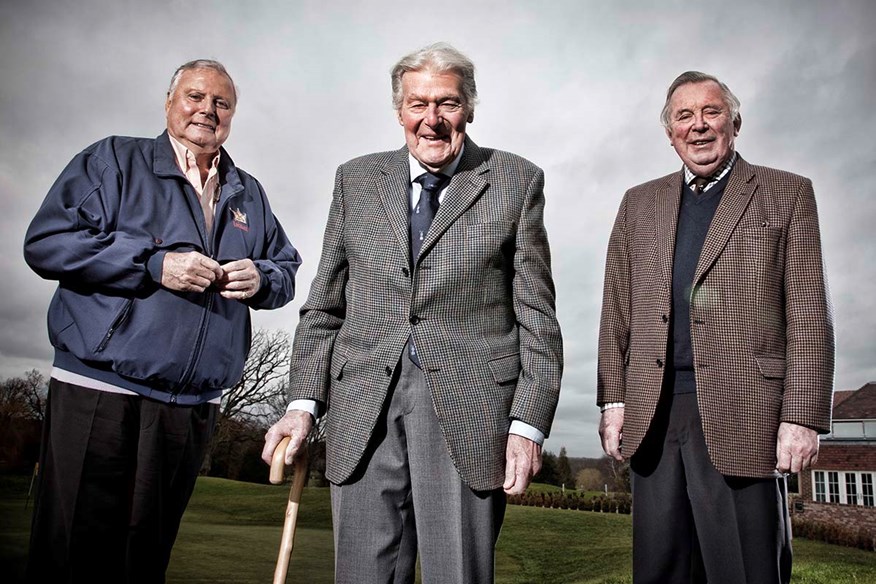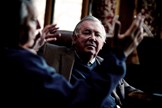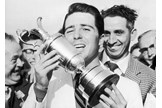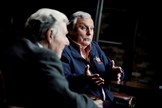Golf’s three wise men: John Jacobs, Peter Alliss, Donald Steel
Last updated:
Peter Alliss, John Jacobs and Donald Steel are three doyens of British golf. In 2013 we got the three men together for an in-depth interview. Sadly, John and Peter have since passed away, but there their broad and fascinating views on the game they loved are timeless.
John Jacobs, Peter Alliss and Donald Steel are three of the most eloquent and respected voices in the game. Between them, they know everyone there is to know and all three have been notable players in their time. But, what shines through is their passion for golf; despite the fact the game they played is very different from the one that is played today.
RELATED: Andrew Cotter on working with Peter Alliss
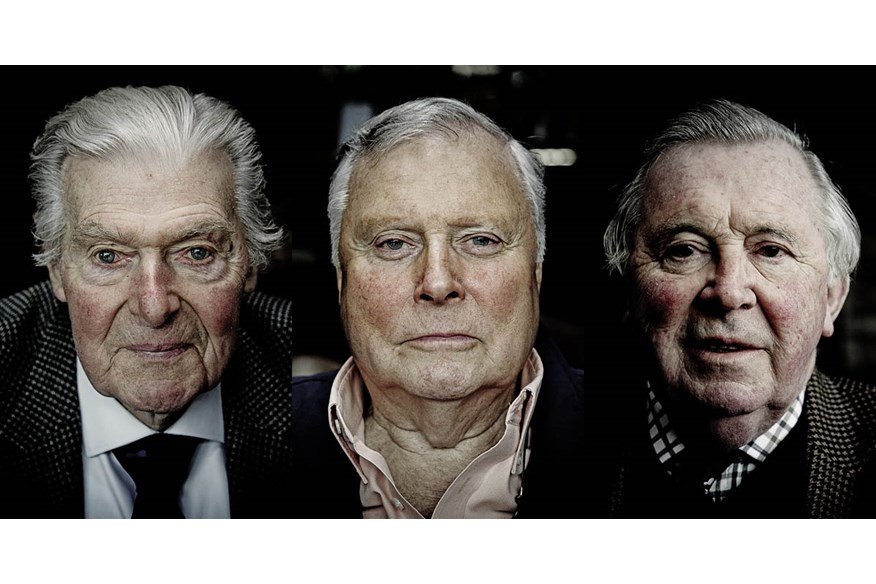
Peter Alliss played in eight Ryder Cups, and still says he finds it painful to walk past the spot at Wentworth where he duffed a chip in 1953, which contributed to GB&I losing the 1953 match. Bizarrely, he was never a Ryder Cup captain, something he says he would have hugely enjoyed.
His broadcasting career has made him “the voice of golf” for millions; and he has been on everything from Desert Island Discs to This is Your Life. He has written dozens of books and written forewards to hundreds of others. It is impossible to think of anyone else who has spoken so amusingly about the game for so long.
RELATED: Peter Alliss – Reflections on a life in golf
John Jacobs, like Alliss, was the son of a golf professional. After being discharged from the RAF – where he was trained as a Flight Engineer on Halifax Bombers – he turned professional. He was a terrific matchplayer, and with Bernard Hunt played 32 exhibition matches as a fourball pairing, unbeaten.
It was strange, therefore, that he was only picked for one Ryder Cup side (1955). He has a 100% record in the matches he did play (played two, won two) something not many can say. But he gave up playing to coach because he couldn’t make a decent living as a pro. He is generally recognised as a pioneering architect of Europe’s united approach to the modern game; and so many of the multi-millionaires who play golf in Europe nowadays, owe a lot to him. Butch Harmon once said: “There is not a golf teacher out there who does not owe John Jacobs something.” Indeed, shortly after our meeting, @IllustratedGolf tweeted to say that he was “arguably the greatest golf coach Britain has produced”. Instantly, Hank Haney replied: “He was better than that”.
John Jacobs and Peter Alliss were made Honorary members of the Royal & Ancient; and remain the only Honorary members who are neither royal, ex-Presidents of the USA or Open Championship winners.
Donald Steel is an ordinary member of the R&A. Like both Alliss and Jacobs, he has a vast bank of knowledge of golf course architecture, having worked on over 80 courses all over the world. Indeed, he was the first architect since Harry Colt designed the Eden in 1913 to carry out significant design work at St Andrews. He is also the only architect to have advised every club or course on which the Open has been played.
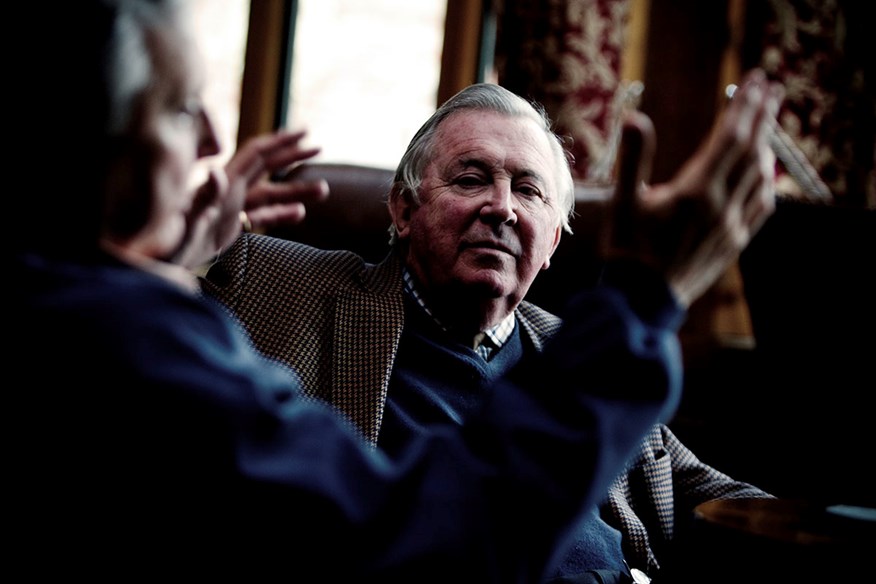
The golf correspondent of the Sunday Telegraph from 1961-1990, he met Bernard Darwin at Rye. He is also the only writer or architect to have played in the Open Championship, which he did in 1970 as an amateur. And, in his time, he has been the President of the British Association of golf course Architects, the President of the Association of Golf Writers and the President of the English Golf Union.
Golf Illustrated assembled the three “doyens” for lunch and a chat, to get their opinions on everything from the modern game to last summer’s riots. Just before we start, Alliss notices the photographer has some growth on his chin. “You need to stand closer to the razor, young man. I blame Graham Gooch. He made people think stubble was fashionable.” And with that, we are off and running…
Peter Alliss: We were brought up to go to work with clean hands, clean shoes and a crease in your trousers. Nowadays, a lot of these golf professionals look scruffy. They have “designer stubble”. If I was a girl, I wouldn’t want to kiss someone with that, would you? It’s like spitting; I hate it. Tiger spits on the green and Garcia spits in the cup. It’s ridiculous. Behaviour, manners, style; call it what you want.
RELATED: Paul Lawrie – “The reaction to my Open win was a problem for me”
Golf Illustrated: What do we think of Ricky Fowler’s outfits?
PA: I don’t understand what’s wrong with his head. He has a strange-shaped hat which is quite different from everyone else’s. I’m all for colour, but I think that may be a touch too garish. What I find interesting though is that a lot of these guys are multi-millionaires, and yet often their trousers don’t fit. Bob Charles is still the smartest person I’ve ever seen on a golf course. Doug Sanders always looked pristine. Ian Poulter’s trousers fit, but he’s gone back to 1976, all Rupert the Bear trousers and intarsia sweaters. In general, though, colour is good. Northern Europeans as a breed are very dull when it comes to colour; so we should encourage it. I don’t like baseball caps indoors, just as I don’t like people putting feet on the table. And we should remember you can look untidy in a jacket and tie. The old Secretary of the R&A Keith Mackenzie, wore the same blazer for 15 years and a tie covered in minestrone soup, and yet people accepted him. He was a lovely fellow, but a sartorial mess.
John Jacobs: Talking of R&A Secretaries, I remember playing in the Open with Peter at St Andrews in 1955, when there was an awful hold up on the 5th green. While we were waiting, Peter bowled a ball cricket-style towards me and I struck it beautifully. It whistled through the group on the 13th green. When we came off the 18th green Brigadier Brickman came up and said: “I hear you’ve been playing cricket on my course…” We got a frightful dressing down. Can you imagine that happening in an Open nowadays?
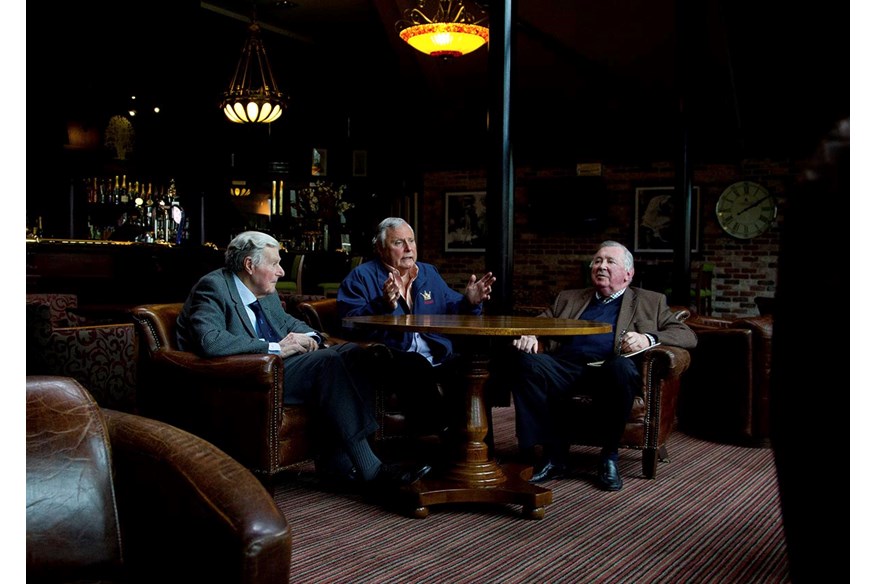
Golf Illustrated: You always hear players of your generation say golf was a much quicker game to play? True, or myth?
PA: I won my first tournament at Little Aston, playing with Bernard Hunt. We played the final two rounds on a Friday, so you could get home to your club and look after the members at the weekend. We went round in three hours and 58 minutes for two rounds! That is a fact. I shot 66-68 and he shot 68-71; and I won. You try telling that to someone today and they’ll call you a bloody liar; but I’ve got the cuttings at home to prove it. People used to hate playing with Bobby Locke, who was the best player of the day, because that would take two hours 50 minutes, and that was regarded as very slow.
JJ: I was in the first group out at the Open at Carnoustie, on the tee at 8 o’clock. Gerald Micklem was the starter; and when my playing partner never showed up, he asked if I wanted to go out with a lady marker, which I did. We were back in the clubhouse in an hour and 45 minutes! That lady marker sent me Christmas cards for donkey’s years after that. When I was growing up at Lindrick all the members used to play two rounds in a day. As a youngster, in my school holidays, I often would go round three times.
PA: And in tournaments we used to play two rounds on the Friday, and drive right through the night, (before there were proper roads) to get home in time to look after the members on the Saturday. Tell that to pros now, and they wouldn’t believe you. You had to phone the AA beforehand, to find out if any petrol stations were open!
GI: Already this year, there has been at least one tournament played on a course over 7,800 yards – does the seemingly endless extension of golf courses worry you?
Donald Steel: Yes. It does. Because of advances in technology, modern courses can’t defend themselves. That’s fine if you have a 200-acre site and can keep expanding, but a lot of the old classics have been left behind. To defend courses nowadays from professionals, you have to put pins barely on greens; so you are faced with a 260-yard shot over water, and the pin is only three yards on! I also hate big collars of deep rough immediately off the greens. You can miss a green by a couple of yards and end up having to hit with all your might. In my day, designers used to talk about “strategic” and “penal” architecture. Nowadays, modern designers seem to be only interested in the latter. Pine Valley used to be the toughest course in the world. Now, there are many, many courses which seem to be much tougher than Pine Valley.
PA: You can’t change the world of golf for a couple of thousand players, namely the professionals; and yet we have. I marvel at what modern players do and the way they play the game, I really do. But the real sadness is classic courses like Sunningdale Old are becoming redundant when it comes to tournaments. We used to play at places like Bristol & Clifton and Little Aston. I don’t know what the answer is. Maybe Nicklaus was right, and we need a “tournament” ball, which goes less far. My personal feeling is that we should illuminate par. The USGA are obsessed with the fact that no one should go too far under par. But why? It doesn’t matter what someone shoots, as long as he beats the rest of the field.
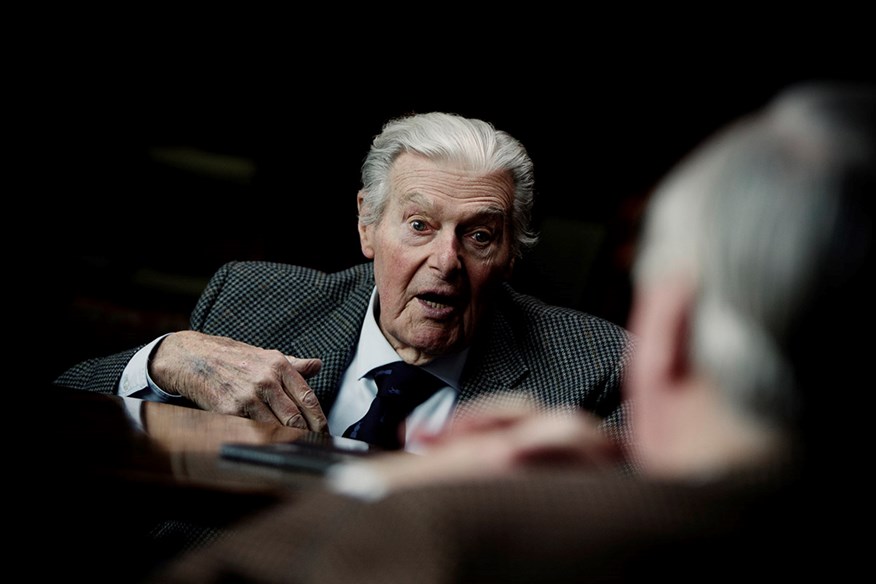
JJ: Back in the 1950s I wrote that golf was taking too long and was too expensive. It won’t happen in my lifetime, but I hope they restrict the length the ball goes. I hate the thought of 7,800-yard courses; but if they build them, they must also put front tees in, so that it can play at 6,400 yards. My favourite course in the world is the Old Course at St Andrews, and I hate the fact they have to keep extending it. Even the hacker or chopper can hit the ball vast distances now; maybe not straight, but vast distances nonetheless.
DS: As a golf course architect, it’s a great compliment if people want to rush out and play your course. I don’t get the feeling I want to rush out and play some of these new courses. I don’t often look at a new course and think “I wish I’d done that”. In fact, I often think “I’m very glad I didn’t do that!” About 12 years ago, it was thought the manufacturers couldn’t get anything more out of the ball; and so that’s why the R&A and the USGA held fire. In a way, you have to take your hat off to the manufacturers. But, most golfers in the world now want something to be done.
PA: Gary Player is a funny old boy, and you can love him one day and loathe him the next, but he said a few years ago that players would be hitting it over 350 yards. I thought at the time “silly bugger; you don’t know what you’re talking about”. But, he’s been proved right. And, of course players are so much bigger nowadays. The only player who was any good and over six foot tall in my day was George Archer, who won the Masters. Hogan, Bobby Jones, Sam Snead; they were all comparatively small. All these new American players now are 6ft 2in, or 6ft 3in. It’s frightening. The shame is that this crash, bang, wallop game is very one-dimensional. In our day, there were many great ways to play.
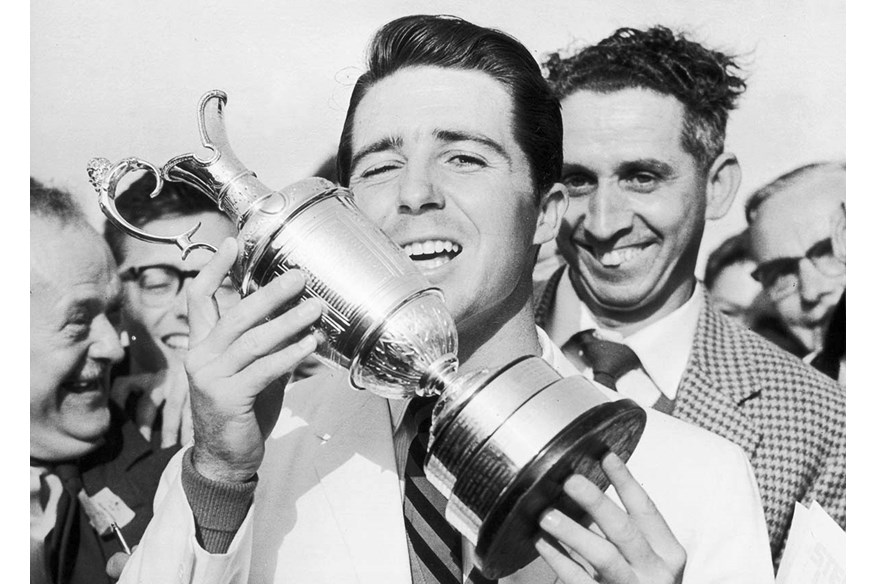
DS: The only stat you now hear talked about is driving distance, but the distance modern players hit their irons is astounding; and they don’t look any different from the ones we were using in the 1960s. Tiger hit his 2-iron 280 yards the other day. Well, even on the longest par 4, he’s only going to have 220 yards after that. He never needs to hit a driver. Even at 600-yard par 5s, it seems like all players are getting up with a 3-wood and 7-iron.
JJ: What I notice is that golf is taught so much better nowadays, relative to when I was a kid. It is taught logically – which it certainly didn’t used to be. At the end of the day, the golf swing is not rocket science. At the address position, you should aim the club at your target and stand parallel to it, which gives you a chance of swinging in the right direction. Then take the correct posture so that you are not only facing the right way, but you have the right angle of attack. Today, good players are frightened of swinging flat. When you watch golf on TV, the vast majority stand near to the ball and swing upright, by moving the body out of the way. Johnny Miller, Jack Nicklaus, Tom Watson and Nick Faldo all have been upright, but with their bodies in the way, and they had to be changed.
RELATED: Bryson DeChambeau’s clubfitting secrets revealed
GI: If you were a golf administrator would you ban the long putter and the belly putter?
PA: Absolutely. They banned Sam Snead for his croquet-style of putting because he looked inelegant; and exactly the same thing could be said with these. The fact that now players use it when they have to drop the ball two-club lengths is utterly ridiculous. How can that be in the spirit of the game!
DS: It just looks so unnatural. What is frightening now is that over half the field in today’s tournaments seem to be using them. And, it’s not because they can’t do it another way. It’s because they have worked out this is the most efficient method. There are guys out there like Keegan Bradley who have never putted with anything else.
PA: There is no doubt in my mind that the most skillful players to play the game were around from 1900 – 1930. If you look at the tools they had. The balls weren’t round. The greens weren’t cut. There were sheep everywhere. The bunkers weren’t raked. And it still rained. And the wind still blew. And yet, they still went round in 73, 74 and 75. You could put any player today on the front tee at Royal Cinque Ports (where they played the 1909 Open) with the same equipment and I bet whatever you like they wouldn’t break 80.
DS: Technological advances have always been happening, ever since we went from hickories to steel shafts; from gutty balls to rubber-cored ones. And every one of these advances has made the game easier. But, I think what has been different about the last 20 years is that we’ve never had a surge across all areas, like we have recently.
PA: You’ve got to be careful, though, because everything has moved on. I remember watching Tommy Lawton play football. He had army boots on and played with a leather ball, which weighed a ton when it got wet.
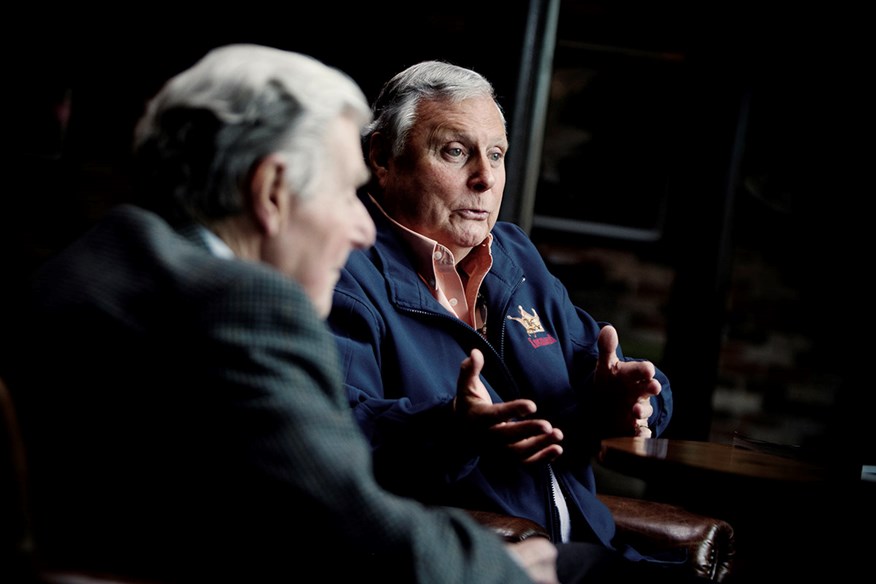
JJ: I used to be a goalkeeper, and did my right knee in trying to kick a dead ball. All my bilateral ligaments went.
GI: Could you argue that today’s players are more one-dimensional than the characters of the past?
DS: They are certainly slavish to their preparations, which are very intense. I often think some of them would do well to occasionally indulge in a glass of beer in the evening because every golfer has to relax. It never occurred to us to work out; which I am quite thankful for, actually.
PA: It’s an entirely different world. For club professionals in our day, tournaments were almost an aside. They taught. They sold stuff in their shops. They had two or three different worlds. We all travelled together, and shared rooms. Now, it’s all private jets and huge entourages. No one even had an en-suite room in our day; you waddled down the corridor to the bathroom with a piece of soap in a tin.
Professionals used to come in all shapes and sizes. Now they are all tall and look like Adonis. If McIlroy goes to Italy this year, he’ll probably come back with a couple of Ferraris. And the other difference is today, they literally just have their golf to worry about. They get up in the morning, eat muesli and egg whites, hit some balls, play a few holes, hit some more balls, eat the rest of their egg whites, have a leaf of salad, go on Twitter and go to bed. You could argue there’s not as many characters now, because the rules and regulations don’t allow them to be.
I remember Tommy Bolt coming on to the 1st tee at Tucson. He was wearing white trousers, black and white shoes and a red alpaca bell-sleeve jumper, lifted his leg in the air and indulged in a bit of flatulence (not that that makes him a character!). He was fined $50 and he complained they were taking all the colour out of the game.
DS: Max Faulkner was an eccentric and wonderfully colourful.
PA: So were Norman von Nida and Dai Rees.

GI: Are you shocked by how much money there is in golf nowadays? The winner of this year’s Open will win £1 million, give or take a few pennies.
PA: What intrigues me is that we see demonstrations about the world of banking, with people camping outside St Paul’s and so on; and everyone is complaining about how much they get paid. And yet, we have footballers who are paid £150,000 a week and bizarrely the general public don’t complain one bit about that. That’s weird in my view! The worst Premier League player is paid £30,000 a week. You’ve got Tevez being paid a fortune and not playing at all for months.
JJ: I stopped playing in tournaments aged 38 because I knew I could earn more from teaching. The most important thing in golf is temperament. It’s more important than technique. And I didn’t quite have that. As a pro, I wasn’t as good as you Peter, but I was still pretty good. And yet, I knew I wasn’t going to be good enough to make a living.
PA: If you want to see something that has changed more than anything, it is the Ryder Cup. I played in eight of them. We used to get three pairs of Saxone shoes (two pairs of golf shoes and one walking), two pairs of Dax trousers, three double-knit cashmere sweaters, three shirts, a Swallow raincoat, a waterproof suit, a bag and a “holdall”; and that was it. Now, things are vastly different. It makes me laugh. When Bernard Gallacher was captain at one match, the cost for each woman on the team was £18,000. They each had ball dresses and outfits for every day. I bet it’s a lot more than that now.
GI: What are your thoughts on Tiger Woods, and what he’s been through in the last few years?
PA: What’s interesting is that the success of Tiger Woods has not brought masses of poor, black kids into the world of golf. He was on TV at three, and his father famously said he would be bigger than Jesus Christ, but it hasn’t happened, even with his Foundation.
For over a decade Tiger strode majestically over the world of golf. He hit bad shots occasionally, but he made miraculous recoveries; and he was brilliant to watch. Then, his private life became a mess. And now, before he pulled out of the WGC Cadillac Championship, he said his knee was better than ever. Well, I’ve got orthopaedic friends who doubt that. He’s had four operations on his right knee.
RELATED: Tiger Woods’ bigotry and racism battle
What I don’t understand, however, is how you can be the best player in the world by some distance, and then suddenly decide you’re going to change your swing? A couple of years ago, I saw Hank Haney showing him how to chip, and I couldn’t believe my eyes! This fellow, who had won a dozen Majors, was being shown how to chip.
It’s a shame because Tiger’s become charmless. Nobody has sat him down and told him to try and get people on his side. I remember Arnie saying 50 years ago that it was much easier to play when people like you than it is if they don’t. There just doesn’t seem to be a part of him, which is soft, pleasant and charming; or if there is, we never see it.
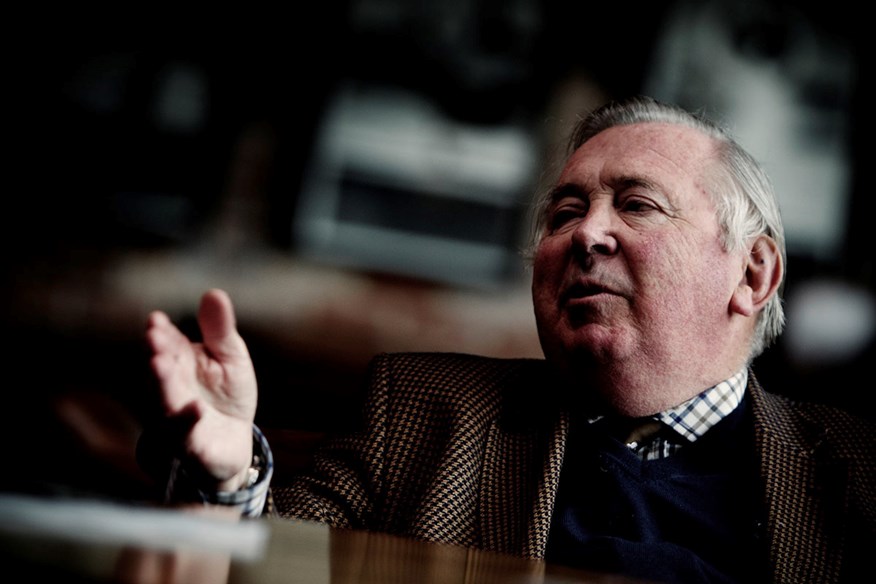
DS: Great champions have huge respect for the game and others who play it. That doesn’t come across with Tiger. He just needs to smile a bit, take his hat off and tell a little anecdote, and people will warm to him immediately. It’s not difficult. But, going back to why golf is going through a tough time, maybe the reason golf clubs have been struggling for membership is it is still too expensive.
GI: The media has changed dramatically in recent times. Are you on Facebook and Twitter? What do you think about the 24-hour rolling news age we now live in?
DS: Speaking as an old newspaperman, I don’t like it. The newspaper used to be the vehicle which told you what had happened a day before. Now, there are so many other ways of finding that out. And sadly, newspapers now only concentrate on one form of golf, namely the pro circuits. In the old days, we were commentators on the general golfing scene. Newspapers seem to think they understand their readership, but I’m not sure they do. I think papers like The Times and The Telegraph would benefit hugely from varying the diet a bit; writing about the club, county and amateur scenes.
PA: Someone uses my name on Twitter, but it’s not me. I couldn’t bear to be like Ian Poulter and spend hours a day doing it. “Here I am sitting down with Donald Steel. We might go and play nine holes but I’ve got to drop in at the butcher’s on the way back to get some chops”. What’s all that about? Newspapers are now becoming defunct. I know people who say that in 20 years they won’t exist. You can find everything out you want, at any time, in any place, if you’ve got one of those bloody machines.
DS: When I started working, players didn’t have official press conferences. You just spoke to who you wanted to speak to, but often editors wanted a lyrical piece of prose, rather than lots of quotes which didn’t say very much. I do remember though, both Arnie and Jack spending hours talking to the press. I remember Jack spending over an hour, after he had lost an Open. That’s a lesson to Tiger, if anything is.
PA: When Max Faulkner won the Open in 1951, people asked Bernard Darwin if he had managed to get a word with the Champion. “My readers,” said Darwin, “are interested in what I think about his win, not what he thinks.” How times have changed. We probably all sound like grumpy old farts, but actually I think we all agree we were lucky playing when we did. We explored the world when global travel was just taking off and it was very exciting. Wonderful times. Wonderful days.
